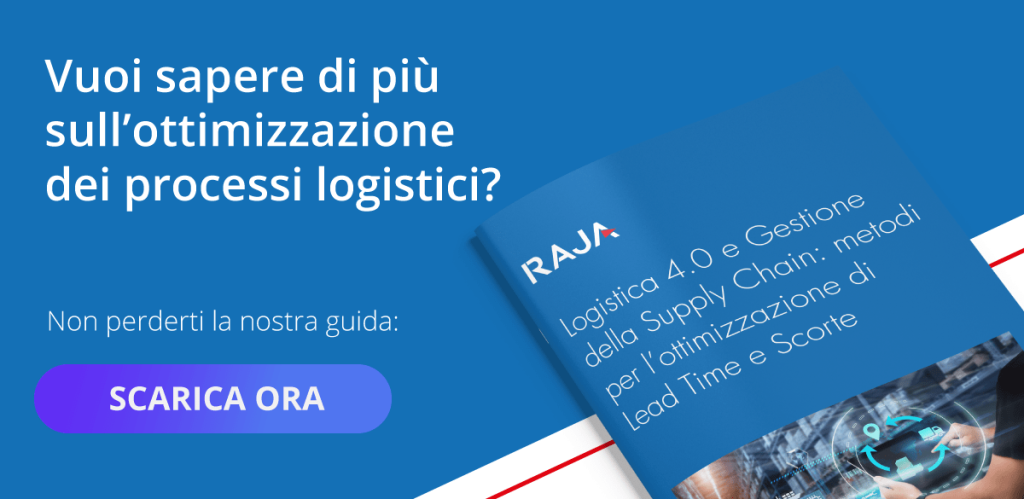The lead time, or lead timeis the time between the order of a product and its delivery to the customer. It is an important supply chain parameter because itimpacts both producers and consumers. Product lead times influence costs, customer satisfaction and the competitiveness of companies.
The lead time of a product often does not depend on a single actor; on the contrary, it may involve different realities. The longer the supply chain, the greater the number of actors involved, including, for example, raw material suppliers, manufacturers, transporters, vendors and more. Many of us, in recent years, will have experienced, perhaps unconsciously, the plurality of actors that make up a supply chain and how this affects lead times. It is enough, in fact, to think of the difficulties in the delivery of so many goods that the market experienced in the post-Covid recovery or the outbreak of war in Ukraine. Critical issues on individual links in the supply chain were enough to lead to extensions in product delivery times.
While it is true,therefore, that it is necessary to optimise this parameter as much as possible, and the effort must come from many quarters, it is also true that optimising lead time is possible and there are variousstrategies for doing so and different areas on which to intervene. Before discussing this, let us try to better understand what is meant when we talk about lead time, how to calculate its value and on what other factors it depends.
What is lead time?
Let us start with the lead time meaningWhat doeslead time mean ? It literally translates as ‘lead time’. In supply chain management, lead time represents the period required to complete an entire sequence of interlinked processes. It encompasses everything from the planning and acquisition of raw materials to the delivery of the finished product to the customer.
Within these periods, there are then other phases, such as production lead times, delivery lead times, cycle times… and other intermediate cycles involving the entire supply chain. Let us look at some of the phases that make up lead time.
Production lead time
Production lead time is the part of the lead time dedicated exclusively to the production of the good. It includes all activities involved in the transformation of raw materials into finished products, such as design, assembly, quality testing and packaging.
Cycle time what it is
Cycle time is the time required to complete a singleunit of product or a single operation. It is a very important metric because, by measuring the duration of each work cycle, it actually measures the efficiency of the individual process.
Often lead and cycle time are mistakenly confused. To clarify, we can say that lead time includes any waiting time, while cycle time refers to the time actually worked.
How is lead time calculated?
Knowing the value of lead time is crucial, both for those who supply the good and for those who use it. Whoever supplies/produces the good, through lead time can plan the necessary operations and assess the profitability of the process. Thecustomer, on the other hand, can use lead time to assess whether the timing is acceptable or not.Lead time can be calculated with a very simple operation: Lead time = delivery date – order date
The result is the sum of the days required to complete all the various steps in the supply chain.
Optimising lead time?
To reduce lead time, it is therefore essential to optimise production and logistics processes. There are several strategies that companies can apply, let us look at them below.
If you want to know more about optimising logistics processes, don’t miss our guide: Logistics 4.0 and Supply Chain Management: Methods for Optimising Lead Time and Inventory.
Efficient planning
Careful planning and forecasting of demand helps to avoid delays in production and procurement of raw materials. If a company can estimate and forecast customer demands, itwill be able to fulfil orders faster, in some cases even immediately.
Planning makes it possible to reduce production lead times in particular because it allows:
- make supplies of raw materials and already have the necessary material ‘in house’;
- carry out work that can be anticipated to prepare the product, some packaging, activities that do not involve customisation, etc.
Efficient planning can also be done by making agreements with regular customers, establishing a cyclical nature of supplies, scheduling orders together. Aninitiative of this kind also has the advantage ofbuilding customer loyalty: thecustomer will also benefit from pro-active procurement planning and a pro-active supply support partner.

Collaboration with suppliers
Establishing collaborative relationships with suppliers allows formore efficient management of raw materials: reduced receiving times, reduced production interruptions and agreed prices.
Some suppliers may also be able to already do some initial processing on the raw material and thus deliver a semi-finished product. Agreements of this kind can reduce production lead times.
Some third-party logisticscompanies mayalso take care of activities such as packaging or the creation of customised parcels, services that are worth evaluating because they often optimise delivery lead times as well.
Automation
By automating production and logistics processes, and more generally using efficient technologies, waiting times and human errorscan bereduced and overall efficiency improved.
In addition to automation systems in production, logistics is also seeing increasing automation: automated storage systems, self-driving vehicles, rollers for transporting packages, pallet trucks that not only transport but also weigh goods, smart labelling systems, vertical warehouses and more.
Automation is truly living in a golden age and, at all levels , is capable ofbringing about significant improvements, whether in simple, easy-to-implement solutions or complex systems using artificial intelligence.
Data analysis
In the age of Industry 4.0, optimising a process cannot be done without analysing data, which can provide so much useful information to identify inefficiencies and pain points in the supply chain, enabling targeted improvements.
The history of processes and workflow is a gold mine for companies; therein lies so much useful information for predicting and organising work efficiently. By keeping track of what is happening in the company, it is possible to understand, for example, peak work periods and product seasonality, information that is crucial for planning work and, consequently ,reducing lead times. But it is also possible to identify inefficiencies and critical points, optimising different cycle times.
The data and its analysis are the starting point for mapping the company’s performance and identifying potential areas for improvement, to improve customer service, minimise costs and develop a sustainable business.














